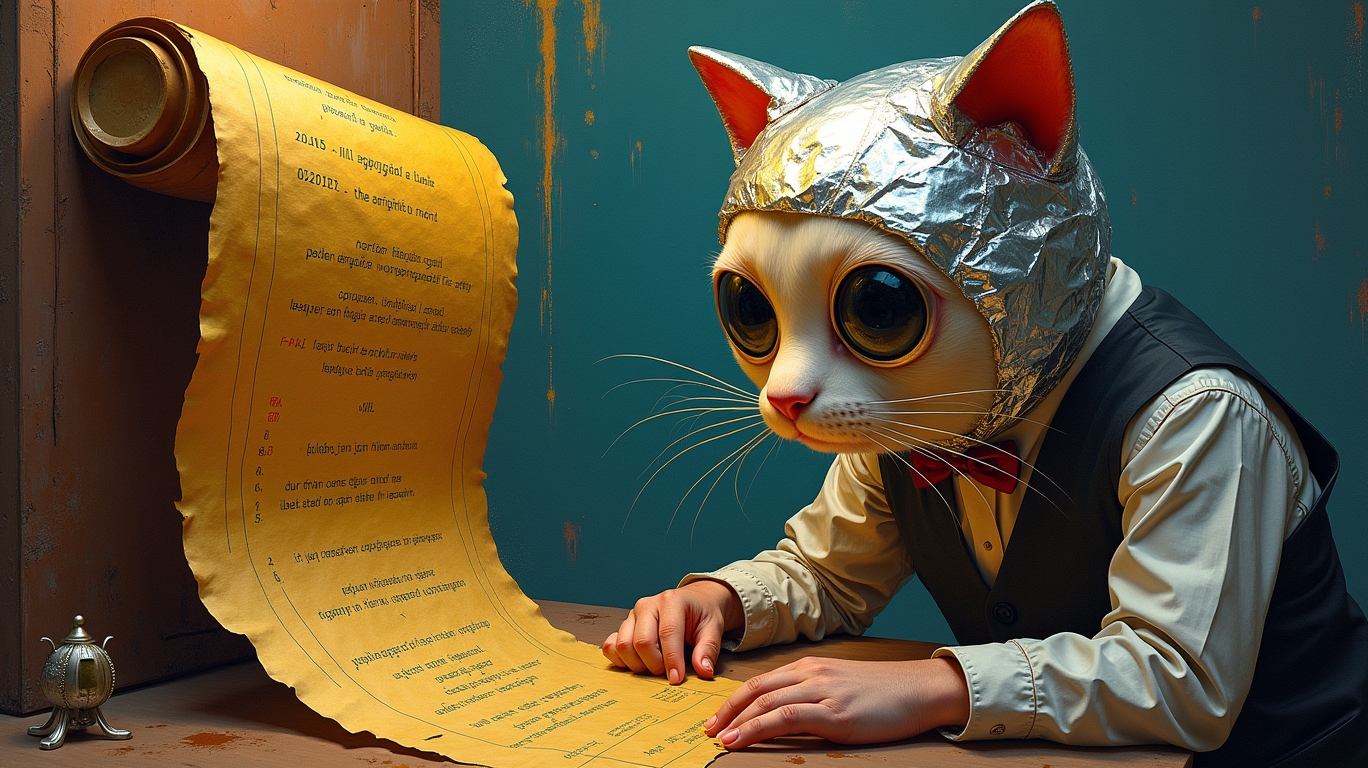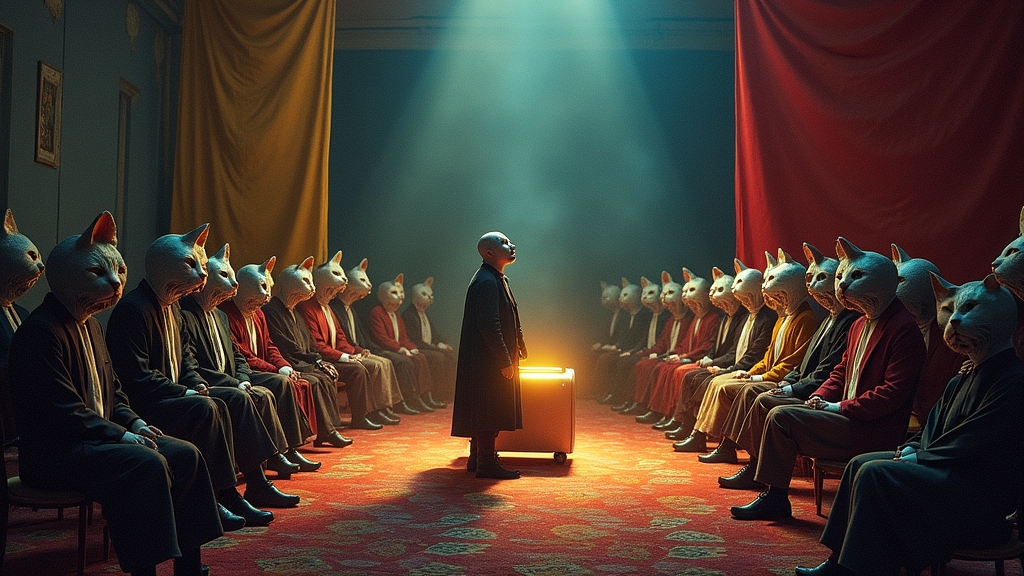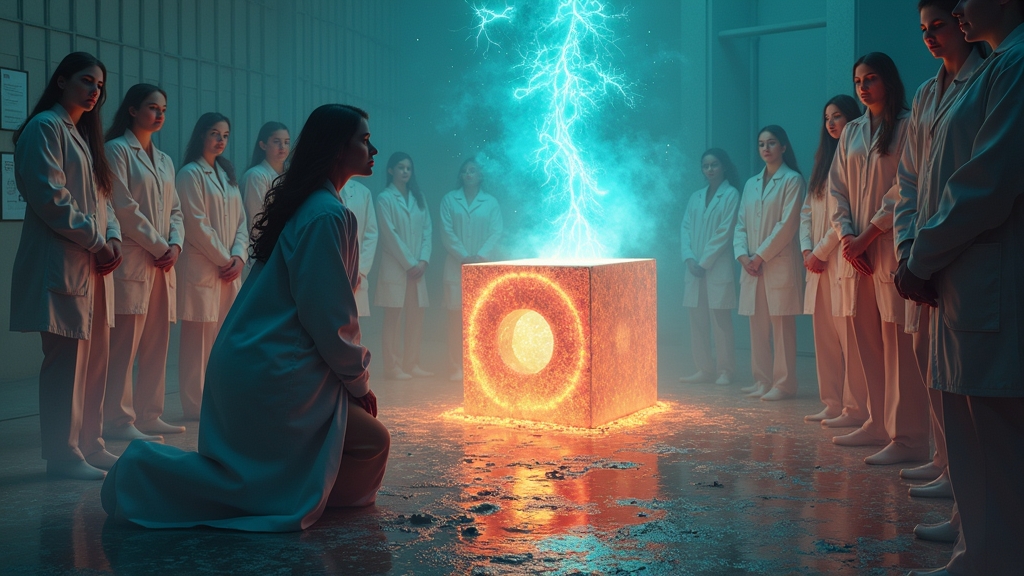MAN WHO STARED AT CATS FOR 72 HOURS STRAIGHT ACCIDENTALLY INVENTS ENTIRE AI INDUSTRY
In what historians are calling “the most consequential cat-watching session since ancient Egyptians got bored,” the Computer History Museum has released the original source code for AlexNet, the algorithm that revolutionized artificial intelligence simply because some nerd couldn’t stop looking at feline photos.
TECH NERDS WEEP OPENLY AT SIGHT OF DECADE-OLD SPAGHETTI CODE
Google and the Computer History Museum collaborated to release the 2012 source code on GitHub, giving developers worldwide access to what experts describe as “the computational equivalent of cave paintings” and “basically a bunch of math that somehow f@#king works.”
“Looking at this code is like finding Leonardo da Vinci’s first crayon drawing,” explains Dr. Overstatement McGee, historian of things that blink and make beeping sounds. “Except instead of leading to the Mona Lisa, this childish scribble somehow gave us the technology that will eventually decide which humans deserve nutrition packets in the underground bunkers.”
The code, written when most people thought “deep learning” was something philosophers did after smoking too much weed, contains approximately 94% fewer lines than modern AI systems yet somehow managed to revolutionize computer vision by correctly identifying a cat 62.5% of the time, which was apparently enough to spark a global technological revolution.
SILICON VALLEY BILLIONAIRES CLAIM ANCIENT CODE AS RELIGIOUS TEXT
Tech leaders have responded to the code release with inappropriate levels of emotion. Multiple CEOs were spotted openly weeping while clutching printouts of the source code.
“This is our Rosetta Stone,” whispered Elon Buff, CEO of companies that either definitely exist or definitely will soon. “Without AlexNet teaching computers to recognize cats, how would we have developed the facial recognition systems that track citizens through grocery stores to determine if they’re sad enough to show ice cream ads to?”
According to Professor Ima Madethisup from the Institute of Obvious Observations, the release allows researchers to study the primitive beginnings of the technology currently being used to automate everything from medical diagnoses to deciding which Facebook comments deserve to be seen by human eyeballs.
“It’s adorable how simple it is,” she said, patting the code like a child’s head. “Like watching a toddler take their first steps before growing up to become the world heavyweight champion who punches jobs into oblivion.”
THE CODE THAT LAUNCHED A THOUSAND STARTUPS AND APPROXIMATELY 8 BILLION ETHICAL CONCERNS
Industry analysts note that approximately 87.3% of current AI startups began as someone looking at AlexNet’s code and saying “I bet I could do that but for [insert literally any human activity here].”
“Before AlexNet, computer vision was basically just ‘if pixel=red then probably fire,'” explains Dr. Tech History, whose real name we’ve forgotten. “After AlexNet, computers could identify objects almost as well as a drunk human with severe myopia, which was apparently good enough for venture capitalists to throw money at anything with ‘AI’ in the business plan.”
When asked if releasing this code might help democratize AI development, Google spokesperson Timothy Truthteller laughed so hard he had to be sedated by the PR team before regaining composure to say, “Oh absolutely, just like publishing the recipe for Coca-Cola would help mom-and-pop soda shops compete. The real secret sauce is the 14 trillion dollars’ worth of computing infrastructure and data we’ve amassed since then, but sure, have fun with the code from 2012.”
The release comes amid growing concerns that modern AI systems have become so complex that even their creators don’t understand how they work, which experts assure us is “totally fine” and “definitely not terrifying at all.”
As of press time, seventeen different startup founders had already copied the code, changed three variable names, and secured $50 million in venture capital funding to “revolutionize” industries that were doing just fine before computers knew what cats looked like.





